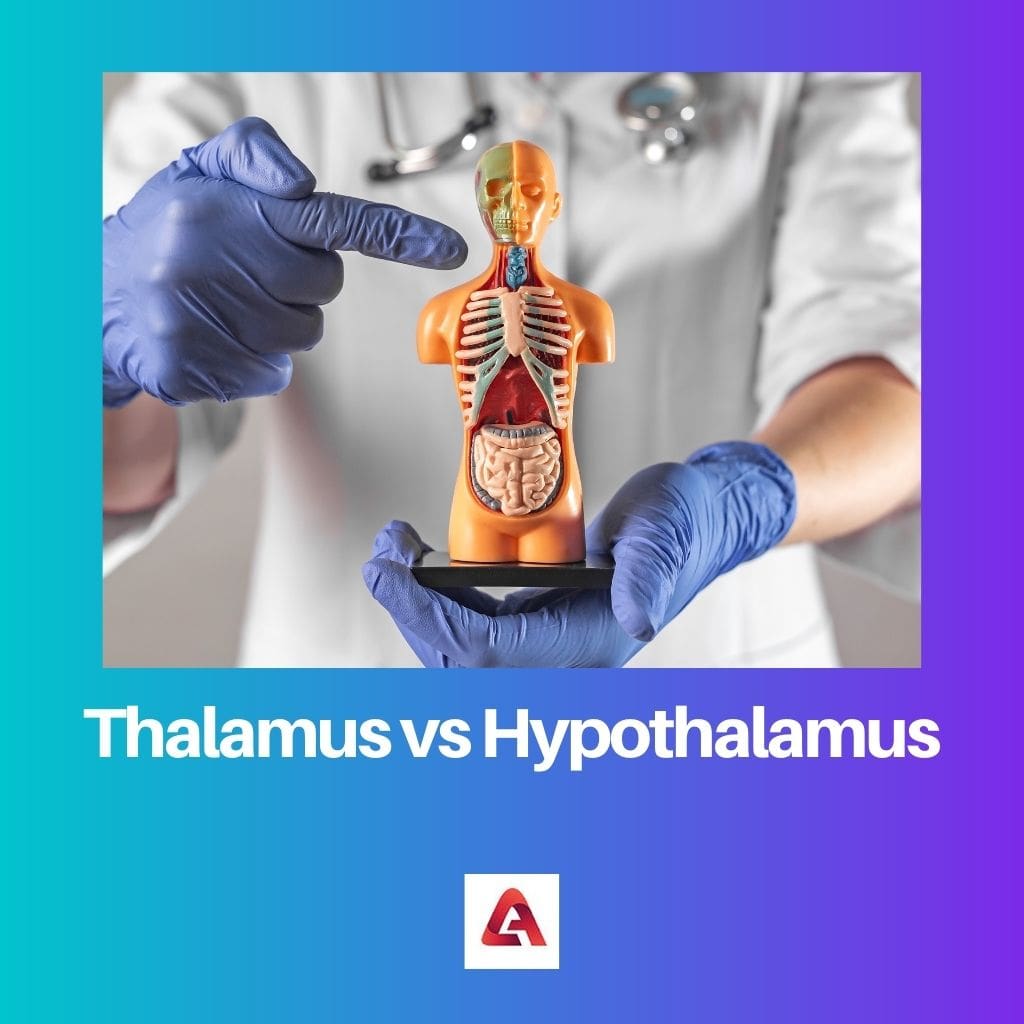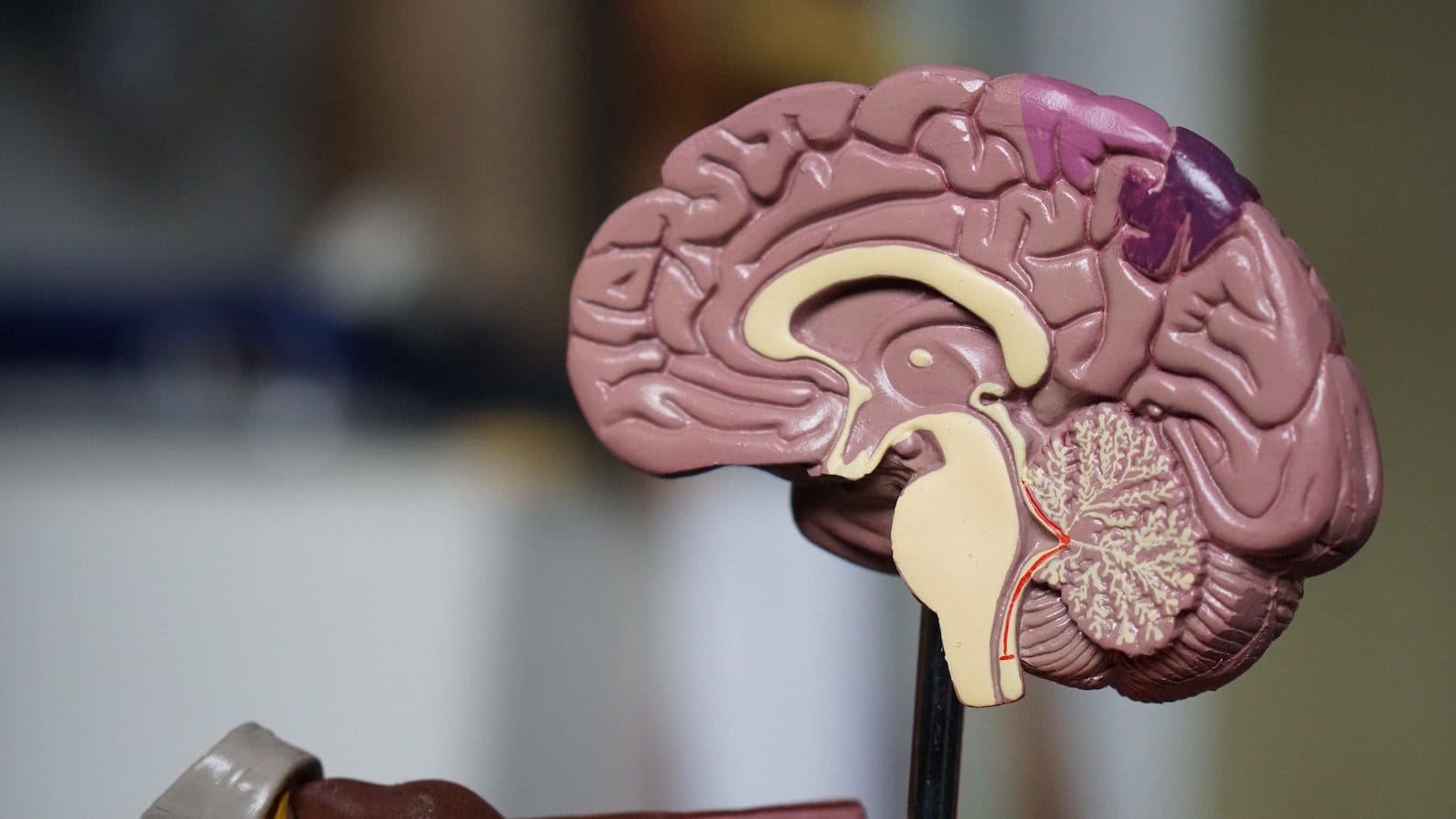The human brain is one of the most complex structures of the human body. Several nerves in the brain are interconnected and responsible for human activity(thinking process, motor activities, and their growth).
Several parts, like the cerebrum, cerebellum and brainstem, constitute the human brain. These parts also have large numbers of smaller pieces which further perform their specific roles.
Cerebrum is composed of two hemisphere-type structures; the cerebellum is partly located under the cerebrum, and the brainstem is the nerve which connects both parts with the spinal cord.
The cerebrum has a division known as the diencephalon between the two hemispheres. Diencephalon has structures like the thalamus, hypothalamus, subthalamus and epithalamus.
Key Takeaways
- The thalamus is a part of the brain located above the brainstem, responsible for processing and relaying sensory information to the cerebral cortex and regulating consciousness, sleep, and alertness.
- The hypothalamus is a small region located below the thalamus, functioning as a primary link between the nervous and endocrine systems, regulating body temperature, hunger, thirst, fatigue, and sleep.
- Both the thalamus and hypothalamus are parts of the brain, but the thalamus processes and relays sensory information, while the hypothalamus serves as a link between the nervous and endocrine systems, regulating various bodily functions.
Thalamus vs Hypothalamus
Thalamus is a part of the brain that acts as a relay station, receiving sensory information from the body and relaying it to other parts of the brain for processing. Hypothalamus is a part that plays a critical role in regulating the body’s homeostasis, including controlling body temperature.

Comparison Table
| Parameters of Comparison | Thalamus | Hypothalamus |
|---|---|---|
| Function | Regulates sensory and motor activities | Produce/release/inhibit hormones for the production of other hormones. |
| Location | top of the brainstem, near the centre of the brain. | Above the pituitary gland, below the thalamus. |
| Size and structure | Two bulbs on each side of the hemisphere. Larger in size. | Many small bulbs (nuclei).Smaller in size. |
| Other responsibilities | Alertness and consciousness. | Internal body balance. |
| Disorders | Movement disorders, visual disorders, sensory loss(coma), etc. | Appetite disorders, sleep disorders, trauma, etc. |
What is Thalamus?
Thalamus is the sub-part of the diencephalon(division between the forebrain); it’s a grey matter structure mainly responsible for humans’ sensory and motor activities.
Thalamus has several responsibilities, like it regulates alertness, consciousness or wakefulness.
Four major arteries supply the Thalamus blood, and those are
- Polar artery
- Paramedian artery
- Thalamic and subthalamic arteries
- Posterior choroidal arteries
The brain has sensory nerves that pass the signal to the thalamus as soon as something happens, and then the thalamus reacts and sends further calls to the cerebral cortex.
Thalamus is a complex structure with two ends, anterior and posterior poles. It also has four surfaces, those are:-
- The medial surface has an essential nucleus of the thalamus
- The external medullary lamina covers the lateral surface.
- The superior surface is coated with some white substance.
- The inferior surface is connected to one end of the hypothalamus
The thalamus is the diencephalon’s largest subdivision consisting of nuclei on each side of the forebrain or cerebrum.
It is located in the brain’s centre, lying on the brainstem. It surrounds the third ventricle within the brain. Thalamus also plays a role in emotions, memory, arousal etc.
The thalamus is a sensitive part of the brain and can be triggered easily; neoplasia can damage thalamus disease in the blood supply or even cause a haemorrhage.
Injury to the thalamus may lead to thalamic disorders like brain damage, auditory diseases, sensory loss, motor loss, thalamic hand etc.

What is Hypothalamus?
The hypothalamus is the brain’s tiny part that maintains the body’s internal balance. Its primary responsibility is to send signals to the pituitary gland to produce hormones or increase or decrease hormone secretion.
It is responsible for producing, releasing or inhibiting hormones, which are further responsible for formulating other hormones in the body. Hypothalamus lies under the thalamus and above the pituitary gland.
It serves as a link between the endocrine and nervous systems.
Other significant functions of the hypothalamus are regulating heart rate, blood pressure, body weight, appetite, body temperature and sleep cycle. The size of the hypothalamus is not more than an almond. They are present in large numbers known as nuclei.
Hormones that the hypothalamus majorly secretes or is responsible for are:-
- Oxytocin
- Growth hormone
- Anti -diuretic hormone
- Gonadotropin hormone
- Prolactin hormone
Hypothalamus is responsible for stress and controlling the body temperature. It controls daily body needs and balance. It secretes melatonin from the pineal gland and converts it into cortisol; this procedure occurs at night.
Any damage to the hypothalamus may lead to disorders like sleeping disorders, appetite disorders or sometimes trauma.
Hypothalamus not only produces signals but also works actively to maintain balance. For example, if the body temperature is high, it will signal to sweat; if the temperature is low, it produces heat.

Main Differences Between Thalamus and Hypothalamus
- The main difference between the thalamus and the hypothalamus is the functions they perform. One is responsible for motor activities, and the other is for formulating and releasing hormones.
- Thalamus consists of two bulb-like structures on each side of the forebrain, whereas the hypothalamus is present in large numbers.
- Thalamus regulates emotions and thinking processes; on the other hand, the hypothalamus regulates sleep, hunger, and body temperature.
- Thalamus is more extensive when compared to the hypothalamus.
- Thalamus is located in the brain’s centre and on top of the brainstem, whereas the hypothalamus lies beneath the thalamus.
- Thalamus is responsible for reflective activities; on the other hand, the hypothalamus tends to have mental or internal activities.

- https://academic.oup.com/chemse/article-abstract/10/2/239/326161
- https://www.jneurosci.org/content/21/17/6706.short

This article gives a detailed insight into the human brain and its complex parts. A very informative read!
Yes, I found it very informative too. The explanation of the thalamus and hypothalamus is very well detailed.
I’m not sure if the information here is accurate and up-to-date regarding the functions of the thalamus and hypothalamus. I’d like to see more verified sources to support these details.
It’s always important to verify scientific information, but the details provided seem to align with the current knowledge about the human brain.
I understand your concerns. It’s always beneficial to have multiple sources of information to cross-check facts.
This article makes understanding the thalamus and hypothalamus easier through its well-structured explanations. A commendable piece of work!
This article is a comprehensive source of information regarding the human brain’s structure and its various functions. An excellent piece of reading!
Absolutely, it’s great to have all the key takeaways and comparison table in one place to understand the nuances of the thalamus and hypothalamus.
The thorough explanation of the thalamus and hypothalamus functions is quite enlightening. A fascinating read indeed!
Absolutely, the depth of information about the thalamus and hypothalamus provides valuable insights into the intricate nature of human brain structures.
I agree, it’s an engaging read that illuminates the complexities of the human brain’s core components.
I found the comparative analysis of thalamus vs hypothalamus quite intriguing. It clearly presents their unique roles in neurological functions.
The comparison table is very insightful, providing a quick reference to understand the distinct functions of thalamus and hypothalamus.
The detailed description of the thalamus and hypothalamus functions is well articulated. It adds significant knowledge about the core structures of the human brain.
Absolutely, the insights about the thalamus and hypothalamus clearly depict the complexity and importance of these brain areas.
The content mentioned here is really helpful in understanding the human brain’s anatomy and the functionalities of the thalamus and hypothalamus. It’s educational and well-articulated.
I agree, the detailed descriptions and comparison of thalamus and hypothalamus provide a clearer understanding of their roles in the brain and body.
While the article provides an elaborate understanding of the thalamus and hypothalamus, I wonder if there’s an emphasis on practical applications of this knowledge in medicine and neuroscience.
That’s an interesting point. It would be beneficial to explore the practical implications of understanding thalamus and hypothalamus in medical sciences.
The accurate comparison of thalamus and hypothalamus makes this article an excellent resource for understanding brain structures and functions in detail.
Absolutely, it provides a clear and concise breakdown of the differences between thalamus and hypothalamus.